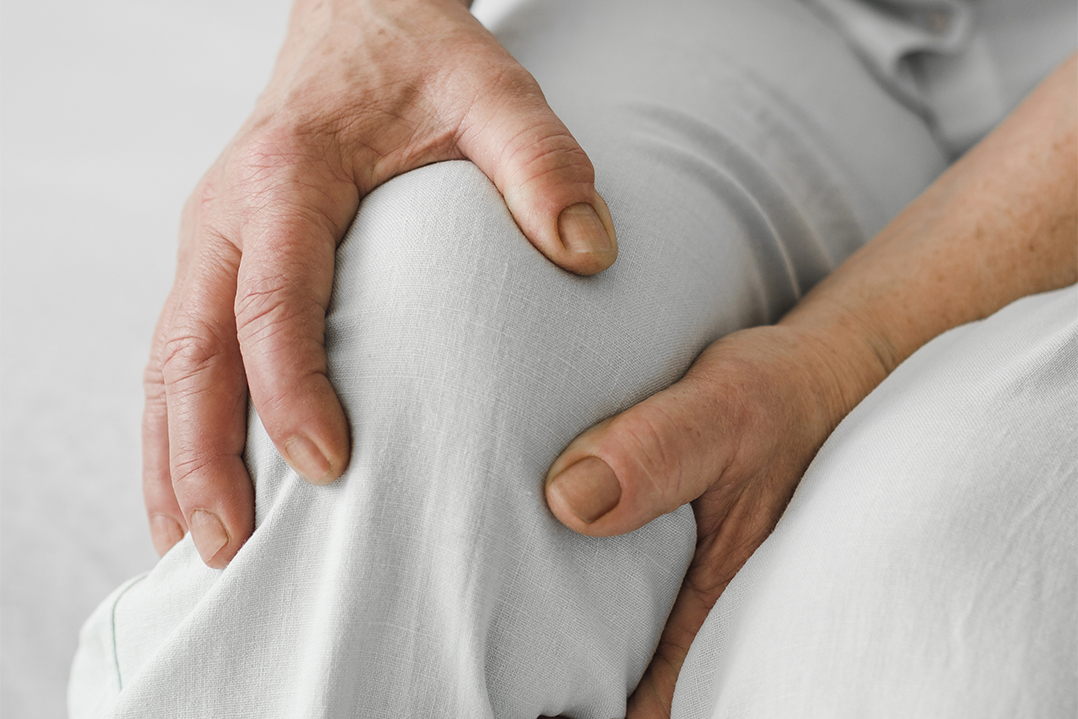
By Hannah Mies, orthopedic surgery nurse practitioner at IU Health Saxony’s Osteoporosis Clinic
As we age, maintaining bone health becomes increasingly important. Osteoporosis, a condition characterized by weakened bones and an increased risk of fractures, affects millions of people worldwide, particularly those over 55. Understanding osteoporosis, its causes, risk factors and preventive measures can help you maintain a healthy and active lifestyle.
What is osteoporosis?
Osteoporosis is a progressive bone disease that occurs when the creation of new bone doesn’t keep up with the removal of old bone. This imbalance leads to bones becoming porous, brittle and more susceptible to fractures. Common fracture sites include the hip, spine, shoulder and wrist, which can significantly impact mobility and quality of life.
Risk factors
Several factors increase the risk of developing osteoporosis, including:
- Age: Bone density naturally decreases with age.
- Gender: Women are more likely to develop osteoporosis, especially post-menopause due to a drop in estrogen levels.
- Family history: A family history of osteoporosis or fractures can increase risk.
- Body frame size: Individuals with smaller, thinner frames have a higher risk because they have less bone mass to draw from as they age.
- Lifestyle factors: Sedentary lifestyle, excessive alcohol consumption, excessive caffeine consumption, smoking and poor nutrition can contribute to bone loss.
Symptoms
Osteoporosis is often called a “silent disease” because it progresses without obvious symptoms until a fracture occurs. However, some signs can include:
- Back pain, caused by a fractured or collapsed vertebra
- Loss of height over time
- A stooped posture
- Bone fractures that occur more easily than expected
Diagnosis
Diagnosing osteoporosis typically involves a bone density test called a DEXA scan (Dual-Energy X-ray Absorptiometry). This test measures bone mineral density (BMD) and helps to predict the risk of fractures.
Prevention and management
While some risk factors like age and genetics are beyond control, there are several strategies to help prevent and manage osteoporosis:
- Nutrition: Ensure a diet rich in calcium and vitamin D. Dairy products, leafy greens, and fortified foods are excellent sources. Vitamin D, which helps the body absorb calcium, can be obtained from sunlight and certain foods or supplements.
- Exercise: Engage in regular weight-bearing and muscle-strengthening exercises. Activities like walking, jogging, dancing and lifting weights can help maintain bone density.
- Lifestyle choices: Avoid smoking and limit alcohol consumption. Smoking accelerates bone loss, and excessive alcohol can interfere with the body’s calcium balance.
- Medications: In some cases, doctors may prescribe medications to help strengthen bones. Bisphosphonates, hormone-related therapy and other medications can slow bone loss and increase bone density.
- Fall prevention: Reduce the risk of falls by ensuring your living environment is safe. Use assistive devices if necessary, improve home lighting and remove tripping hazards.
Living with osteoporosis
For those diagnosed with osteoporosis, managing the condition involves a combination of medical treatment and lifestyle adjustments. Regular check-ups with a healthcare provider are crucial to monitor bone health and adjust treatment plans as needed. Support groups and education programs can also provide valuable resources and emotional support.
Osteoporosis is a significant health concern for adults over 55, but with the right knowledge and proactive measures, its impact can be minimized. By understanding the risk factors, symptoms, and preventive strategies, you can take steps to protect your bone health and maintain an active, independent lifestyle. Prioritize regular screenings, a balanced diet and an active lifestyle to keep your bones strong and reduce the risk of osteoporosis.
If you have questions or would like to speak with an IU Health expert, visit iuhealth.org/joints or call 317-844-9400.




